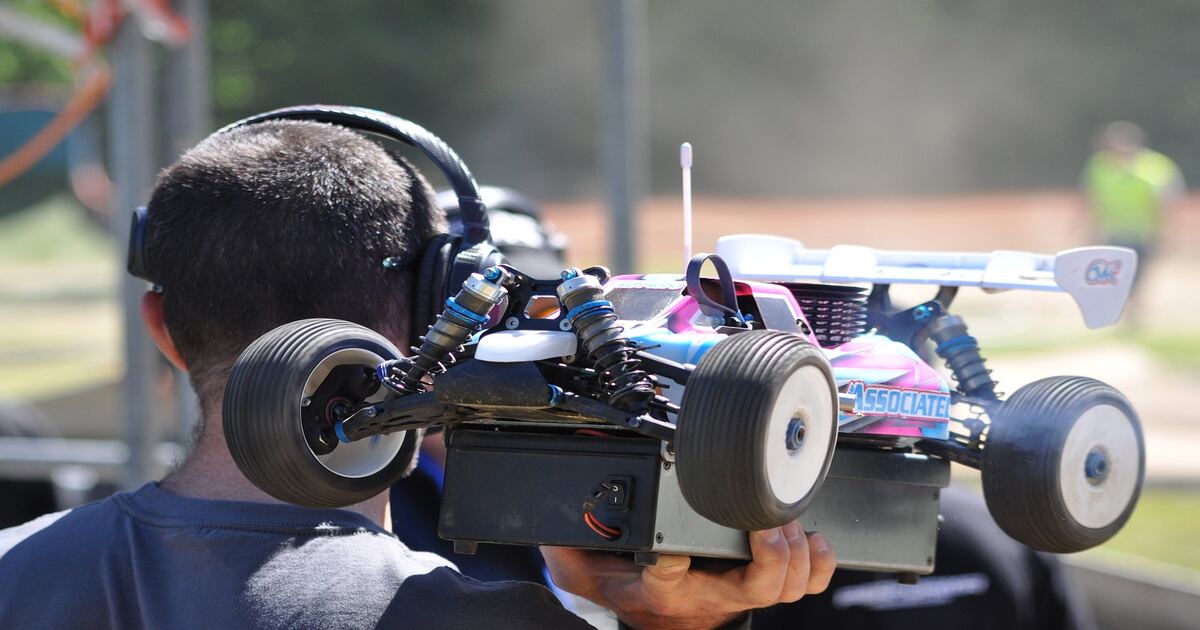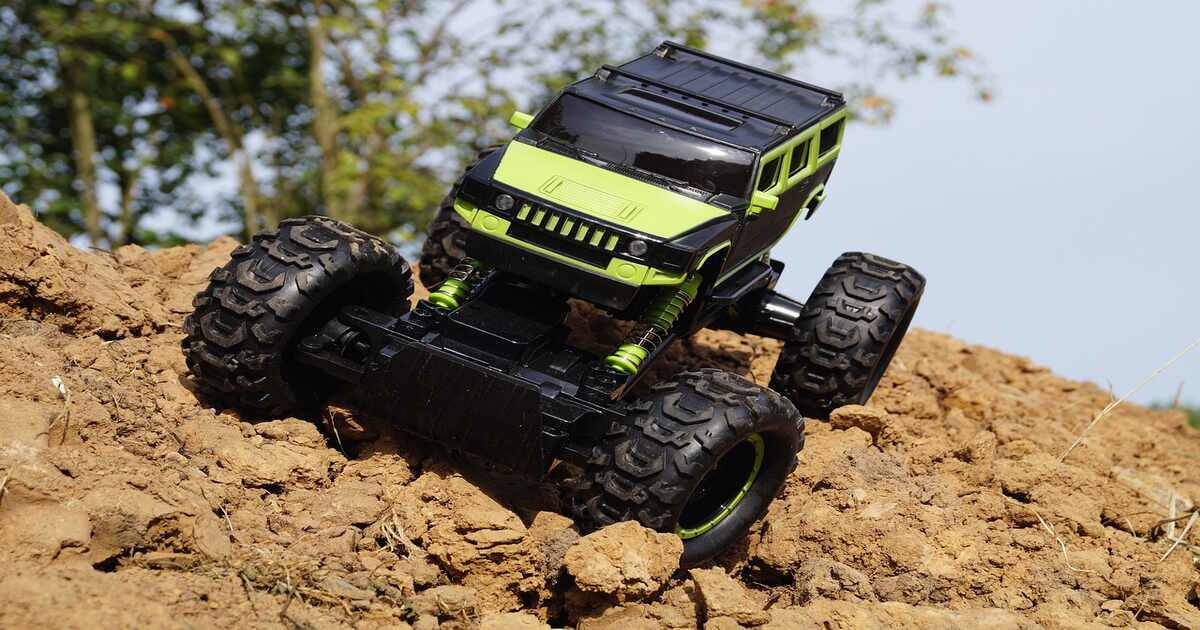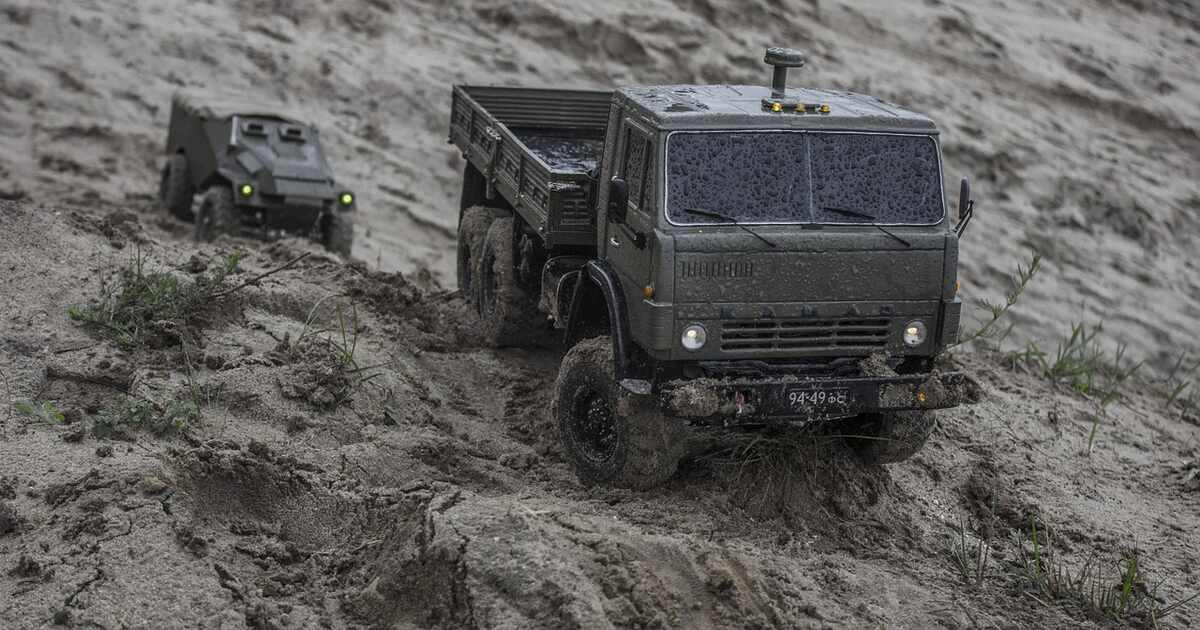A Guide to the Different Types of RC Cars
Date Posted:17 January 2024
![]()
In this article, you’ll learn about:
- The difference between radio-controlled and remote-controlled cars
- The classification of RC cars by scale
- The classification of RC cars by their intended use
So let’s not delay any longer and get started.
Radio Controlled Cars vs. Remote Controlled Cars
The first classification of RC car types is between radio- and remote-controlled. People often use the terms remote-controlled cars and radio-controlled cars interchangeably, so much so that even the abbreviation is the same - simply RC cars. And, yes, both types of RC cars ultimately have the same purpose - controlling model vehicles remotely for competitions, fun, or using them for customization.
Further, both types generally include components such as motors, servos for steering, electronic speed controllers (ESCs) to manage motor speed, batteries, and sometimes specialised features like gyroscopes or stability control systems for improved handling. However, there’s a significant difference that can significantly impact your experience in the hobby.
Remote-controlled cars are operated using a wire or physical connection between the transmitter (the controller) and the car itself. This limits the range of movement and can sometimes be less convenient due to the physical tether between the controller and the vehicle. On the other hand, they are typically less expensive due to the simpler design.
Radio-controlled cars operate via a wireless connection between the transmitter and the receiver in the car, using radio waves to communicate. This technology allows for greater flexibility in movement and a significantly extended range compared to wired cars. They often offer more advanced features, precise control, and a wider variety of options in terms of models and capabilities.
So the key distinction lies in the mode of communication and the complexity of the internal electronics.
The benefits of remote-controlled cars are that they are typically:
- Cheaper;
- Simpler in design, which means they are easier to fix (if you have the knack for it).
The benefits of radio-controlled cars are that they:
- Have a much wider range of movement;
- Offer more precise control due to more advanced electronics;
- Have more customization options as a result of the more complex component structure;
- There are more types of radio-controlled car models on the market.
When people who have been into the hobby for some time use the term RC cars, they typically mean radio-controlled cars and that’s how we’ll use it in this article. With that out of the way, let’s get to the second type of classification of RC cars - by scale and size.
RC Cars by Scale and Size

The size of an RC car is measured in relation to its real-life counterpart, so a 1:10 (or 1/10) RC car is ten times smaller than the vehicle it was modelled after while a 1:1 RC would be the exact same size. The larger the second number, the smaller the car; e.g., a 1:16 model is smaller than a 1:12 one. Mind you, this is just referring to the size of the RC car, not the weight, the type of internal components it has, etc.
The most common types of RC car scales are:
- 1:12
- 1:10
- 1:8
Out of these three, 1:10 models are the most common type of RC car. They are usually the best choice if you are just getting into the hobby as most RC cars are built in this scale, so you’ll have the widest range of models to choose from. To help you picture the size, 1:10 models are somewhere around 50cm long and 20-30cm wide, although the exact size will vary depending on the real model.
When it comes to limitations to RC car scales, well, theoretically, there are none. However, anything larger than 1:8 is typically considered big, while 1:24 and smaller are considered micro models. The large and micro models are mostly made for niche enthusiasts who have very specific uses in mind, so it’s not something most newcomers would be interested in.
Types of RC Cars by Model and Intended Use
The final classification of RC cars is by the type of car and its intended use, although the differentiation is not as clear-cut here as it is with the previous two classifications. At the end of the day, nothing’s preventing you from using off-road cars indoors, regardless of what the manufacturer intended. That being said, here’s how many hobbyists would classify the types of RC cars by model and use:
- On-road/touring
- Off-road
- Drift cars
- Motorcycles
- Trucks
On-Road/Touring Car
Touring or on-road RC cars are designed for high-speed racing and maneuverability on smooth surfaces like pavement, concrete, or asphalt. Unlike their off-road counterparts, these cars are optimized for performance on these types of terrains and are built for speed, handling, and precision. Primarily used for competitive racing or recreational purposes, they excel in racing circuits, parking lots, or designated on-road tracks, where their agility and speed can be put to the test through tight turns and straightaways.
One of the main reasons people prefer touring over other types of RC cars is their responsiveness and ability to reach impressive speeds, sometimes exceeding 90 km/h (we’re talking about high-end models here). Their low-profile tires and aerodynamic designs minimize air resistance, enhancing their speed capabilities and enabling quick cornering and precise control.
The combination of speed and handling demands a delicate balance of throttle control, braking, and steering finesse, making it a challenging experience for hobbyists looking to hone their driving abilities. The competitive nature of on-road RC racing fosters a vibrant community of enthusiasts, constantly driving innovation in design and technology to push the boundaries of speed and performance.
Upgrades in motor efficiency, chassis design, and aerodynamics continually enhance the capabilities of these cars, attracting enthusiasts who enjoy tinkering and customizing their vehicles for optimal performance on the track. In short, if speed and precise control are your thing, touring cars might be the best option for you. And if you’re into competitive RC racing, check out the Association of Australian Radio Controlled Model Cars Clubs, Australia’s national body for radio-controlled car racing, for more info.
Off-Road Cars

Off-road RC cars are purpose-built to tackle rugged and uneven terrains such as dirt trails, gravel paths, and off-road tracks. Unlike their on-road counterparts, off-road RC cars prioritize durability, suspension travel, and robustness to navigate challenging landscapes. Typically used for recreational off-road adventures, trail driving, and competitive off-road racing events, these vehicles are tailored to handle bumps, jumps, and uneven surfaces with ease. The appeal of off-road RC cars lies in their versatility and the sense of exploration they provide.
The larger, knobby tires and increased ground clearance contribute to better traction and stability on challenging surfaces. Off-road RC enthusiasts appreciate the technical challenges posed by unpredictable terrains. The need for skilful control, precise throttle management, and strategic decision-making when navigating obstacles adds an element of strategy and excitement to off-road driving.
The off-road community often values the camaraderie among hobbyists, sharing tips and tricks for conquering different terrains and customizing their vehicles for optimal performance. In essence, everything that makes real-life off-road driving different from on-road driving applies to RC cars.
Buggies
Buggies are one of the favourite sub-classes of off-road RC cars. They kind of bridge the gap between the on-road and off-road RC car worlds, fusing performance attributes from both categories. Their design combines the aerodynamic efficiency of on-road cars with the off-road capabilities necessary to conquer rough terrains, showcasing a versatile blend that appeals to a wide spectrum of RC enthusiasts.
In the context of off-road RC cars, buggies epitomize agility and adaptability, boasting the ability to navigate unpredictable off-road tracks with finesse. Their suspension systems, engineered for absorbing shocks and maintaining stability on uneven surfaces, align closely with the demands of off-road driving. The open-wheel design allows buggies to excel in off-road racing, providing the necessary traction and maneuverability to tackle dirt trails, jumps, and obstacles. On the other hand, buggies also borrow elements from on-road RC cars, emphasizing speed, aerodynamics, and precise handling.
This makes them stand out in the off-road segment, as they can exhibit remarkable agility and acceleration akin to on-road models while maintaining off-road prowess. Many enthusiasts appreciate the versatility of buggies, whether competing in off-road races that demand agility and control or enjoying high-speed runs on dirt tracks. Buggies encapsulate the best of both on-road and off-road worlds, so they could be your choice if you’re seeking a dynamic RC experience that transcends traditional boundaries.
Drift Cars
RC drift cars have a unique space within the hobby and are preferred by people who love mastering the skills required to do perfect drifts. They are designed for precision manoeuvres on smooth surfaces. These vehicles often adopt a rear-wheel-drive layout, specialized drift tires that facilitate controlled drifts, and adjustable suspension systems allowing enthusiasts to fine-tune handling characteristics crucial for drifting maneuvers.
Drift cars are prominently featured in RC drift competitions where participants are evaluated based on their execution, style, and precision in performing drifting maneuvers. Usually, drift cars are very suitable for customization and tinkering. The customization options available for drift RC cars allow hobbyists to tailor their vehicles for optimal drifting performance - think tweaking weight distribution, adjusting suspension settings, choosing specific tires for varying drift surfaces, and optimizing motor configurations to achieve the desired balance of control and style.
Other Radio Controlled Vehicles: Motorcycles and Trucks

RC motorcycles offer a much different experience than RC cars, emphasizing balance, agility, and the challenge of mastering two-wheeled dynamics. These models are designed to replicate the handling and maneuverability of real motorcycles, providing hobbyists with a unique and thrilling RC experience.
Motorbike models prioritize balance, with gyroscopic systems or weighted components to simulate the stability necessary for smooth and controlled riding. As with all other types of RC vehicles, enthusiasts can customise their bikes by adjusting suspension settings, fine-tuning steering sensitivity, selecting tire compounds to enhance performance on different surfaces, etc.
Finally, we get to RC trucks, which is an expensive subtype of its own. You can find people who prefer monster trucks for off-road driving or rock climbing competitions or hobbyists who prefer fire trucks or haulers with trailers for more recreational on-road driving. If a specific type of truck attracts you in real life, you’ll likely find an RC modelled after it.
All Types of RC Cars in One Place
Now you know enough about the different types of RC cars to pick the one you like best. All that’s left is to find a specific model you prefer, so check out our assortment of RC cars where you can find everything and anything you need - from rock crawlers to buggies to drift cars to trucks with trailers.
RCMA is a model and hobby shop run by RC vehicle enthusiasts and we can probably help you narrow down your selection - feel free to contact us with any questions you may have. When you do make a choice, know that you can get your model in-store or purchase it online and get it delivered to your address. Plus, we offer multiple payment options, including buy-now-pay-later.
So make your choice and let’s enjoy RC car driving together!
